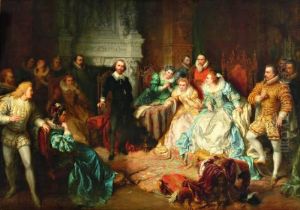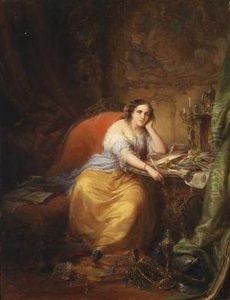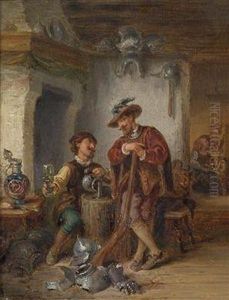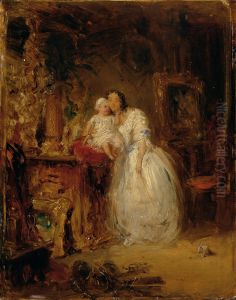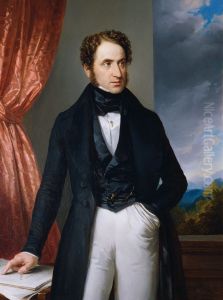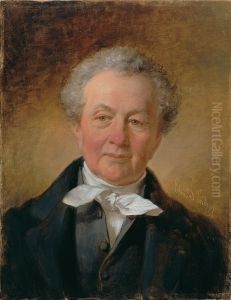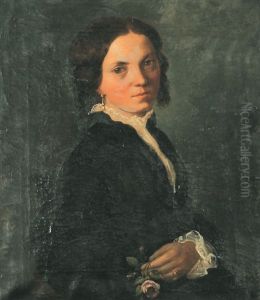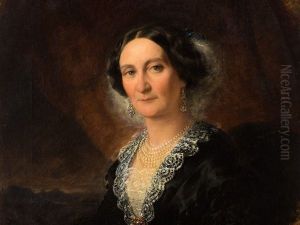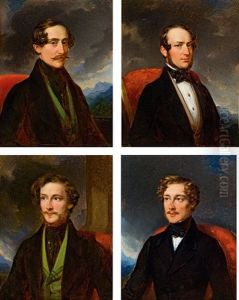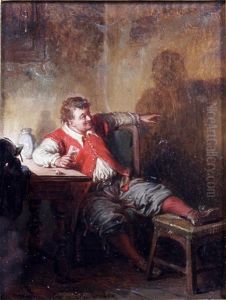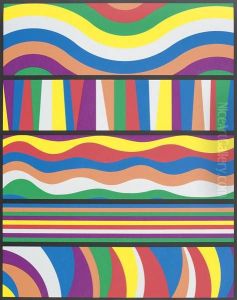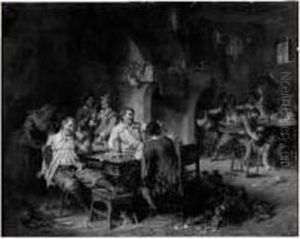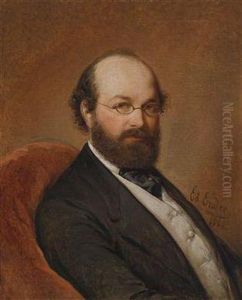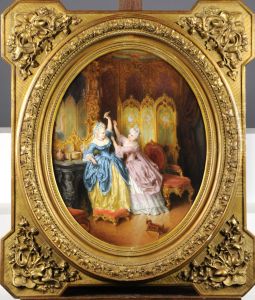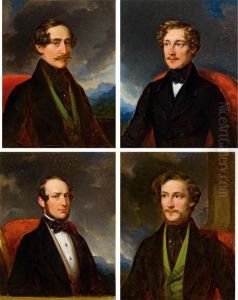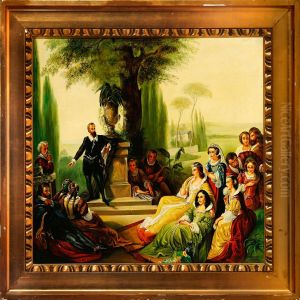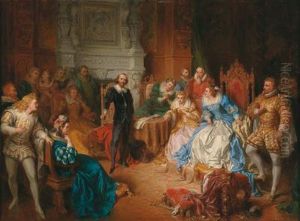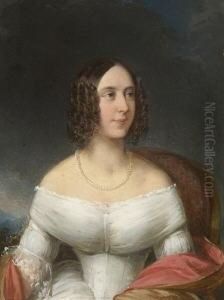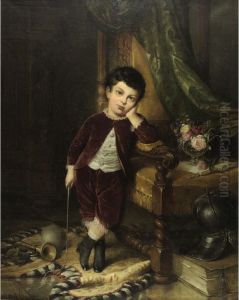Eduard Ender Paintings
Eduard Ender was an Austrian painter born on March 3, 1822, in Prague, which at the time was part of the Austrian Empire. He hailed from a family deeply entrenched in the arts; his father, Johann Ender, was a respected painter, and his brother, Thomas Ender, was also a notable artist, recognized for his landscape paintings. This familial environment steeped in artistic tradition profoundly influenced Eduard's career choice and development as a painter.
Eduard Ender specialized in portrait and historical painting, demonstrating a keen attention to detail and a preference for the romantic and neoclassical styles that were prominent during his lifetime. His education in the arts took place at the Academy of Fine Arts Vienna, where he was exposed to the teachings and works of some of the era's most celebrated artists. This foundational training honed his skills and enriched his stylistic approach, allowing him to develop a distinctive voice within the Austrian art scene.
Throughout his career, Ender traveled extensively across Europe, drawing inspiration from various cultures and artistic movements. His journeys took him to Italy, Germany, and France, among other countries, where he studied the works of old masters and contemporary artists alike. These experiences broadened his perspective and infused his work with a diverse range of influences, contributing to the depth and richness of his artistic output.
Ender's contributions to the art world were not limited to his own creations; he also played a significant role in the cultural life of Vienna and was actively involved in the city's artistic circles. His works were exhibited in numerous galleries and exhibitions across Europe, earning him recognition and acclaim. Notable among his paintings are his portraits, which capture the essence and character of his subjects with remarkable sensitivity and insight.
Despite his success, Eduard Ender remains a somewhat lesser-known figure in the pantheon of 19th-century European artists. His death on June 28, 1883, in Vienna, marked the end of a career that, while perhaps not as celebrated as that of some of his contemporaries, contributed significantly to the richness and diversity of Austrian art during his time. Today, his works can be found in various museums and collections, appreciated by connoisseurs and art enthusiasts for their elegance, historical value, and technical mastery.
